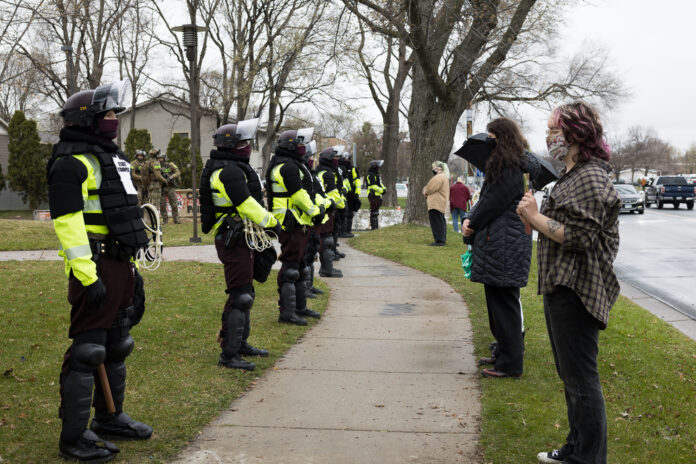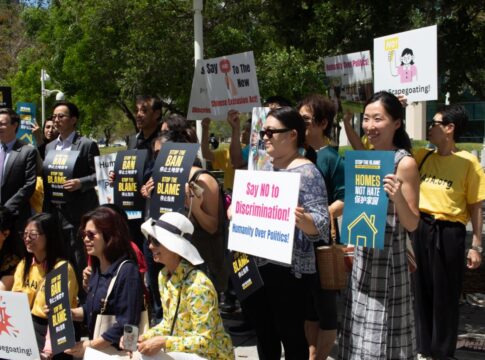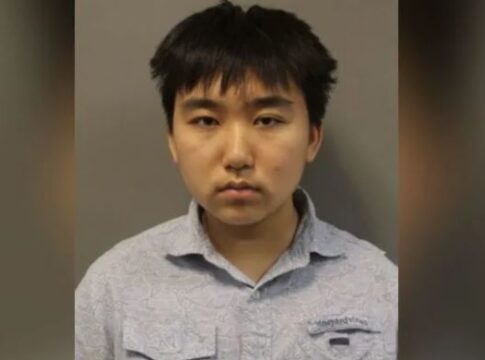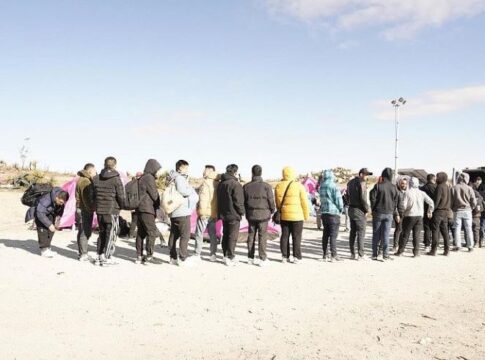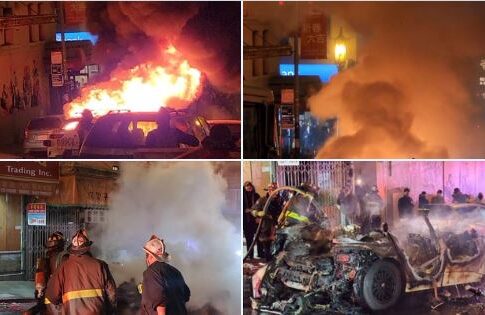Protesters at Brooklyn Center police department. April 12, 2021. Photo by Adam Chau for AsAmNews
By Nathan Reddy, Community Works Institute
The US continues to be embroiled in the froth of racial tensions, and the recent killing of Daunte Wright, just ten miles away from where the Derek Chauvin trial trudges on, has once again spilled those tensions over.
Fresh off of advocating for the protection of their own bodies through Stop Asian Hate, young, progressive Asian Americans are again called to action, but this time to serve as allies in the fight towards racial justice in the United States, with the liberation of Black people at its forefront.
My response, as always, is to turn to Paulo Freire. I don’t profess to be an expert in Freirian studies, but I have engaged with his work for the past few years, starting in my undergraduate years at Cornell. Paulo Freire is a Brazilian educator and educational philosopher and is the educator and educational philosopher of the twentieth century.
LATEST STORIES

His most famous contribution is Pedagogy of the Oppressed, which was read by the Black Panthers and multiple other activists around the world fomenting rage against colonial and neocolonial oppression, largely activists of color. I read it, but my favorite work of Freire’s is Education for Critical Consciousness because I believe it is one that all young, progressive Asian Americans should read.
I think it would help in not only navigating the current turbulence, but also deciding what our role is within it. I don’t profess that I or Freire have the answers, but I do explicitly make the Freirian stance that a chorus of different voices is ultimately a plus for the public as long as the bodies emitting them are willing to work together towards public betterment.
“Dialogue” as Freire would define it is not dominating, but reciprocal, and unfortunately in our current discourse the latter dominates. My effort here is towards the goal of adding my voice to the arena and perhaps influencing the perspective of another kindred spirit, as many kindred spirits throughout my life have influenced mine. With that, let me get to the meat of what I’d like to say.
I think Education for Critical Consciousness is important for young, progressive Asian Americans to read because it discusses a consciousness that has emerged from complete submersion, but is not yet critical. A critical consciousness is achieved when we can reflect on our position in society, and through that reflection, act towards making a better society with others. Reflection and action inform each other, and to improve the quality of both, we must intentionally seek out situations where we can contribute to the greater good.
We are not there yet. Currently, we are able to articulate that structural oppression exists, but that articulation does not come from immersion in the fight for social justice, but our initiation into higher education. Like other people of color, Asian Americans are underrepresented in a number of areas, and as a future teacher, I have to point out the gross underrepresentation of Asian American teachers.
This is a problem, but what is also a problem, or at least something that can be problematized, is our significant overrepresentation in higher education, particularly in elite colleges.
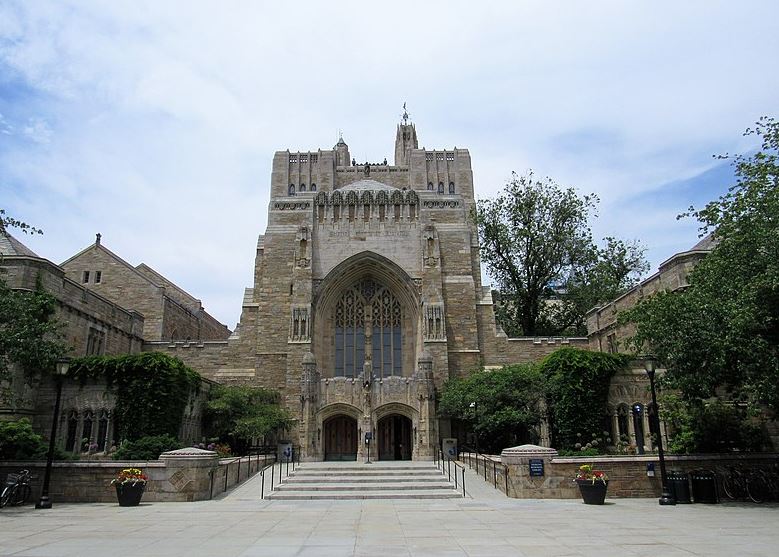
Structures dictate these trends, and so it is a structural development when we see young Asian American college students discussing things such as intersectionality and systemic racism due to their taking ethnic studies courses and more importantly, being immersed within the particular social justice and activist cultures that prevail on campus.
Overall, this is a positive development. At this point, we have emerged from our submersion in the world of college admissions prep that took up our adolescence and are glancing at the shape of injustice.
However, if we do not take the next step towards establishing a critical consciousness, then this new, developing avatar of ours will be stunted in its growth indefinitely, and this will only make us reinforcers of injustice. Young Asian Americans enter college understanding that it is meant as the means to not only make our parents proud, but also discover a greater purpose in life.
The next step seems like a no-brainer: fight for social justice by becoming some sort of professional, usually a doctor or a lawyer. Rarely a teacher, but I digress. As we become more immersed into the world of social justice on campus, we learn, unconsciously, that this is also the world of social status and advancement. It will allow us to advance into graduate school and in our eventual professional careers.
Like studying to ace the SAT, we learn the social justice dialect to move into even more prestige and recognition. The change is in the deeper sense of our purpose and power as historical beings.
We are no longer automatons meant to produce high test scores and grades, but beings who have purpose and power. The problem is that purpose and power is sanctioned by our privilege, and that is something we don’t materially understand yet.
The purpose of a professional activist is exclusive among humans, and the power we have in executing that purpose is significant. So far, we are corrupting our purpose, and being irresponsible with our power.
All this is at the detriment to the people who are at the mercy of our expertise to deal with how social injustice rears its ugly head in their own lives, whether through a vicious medical or legal problem, or both.
In our engagement with them, we extend “false generosity” towards them, a key Freirian term. It entails help, the type of help that normalizes who is helped, and who provides the helping.
A veneer of progressivism communicates that we “care,” but our actions towards our clients and patients suggest that we do not care about them but about ourselves. Our practice is less working with others, and more showing others that we can do for them what they cannot do by virtue of our superior schooling, and oftentimes by virtue of the fact of schooling.
When we do our jobs, how often is it that we ask who we are doing it for? Is it for the people that we got into this work for, supposedly, or to satisfy our own ego? We can lie, but the truth will show up in how we interact with those “served” by us.
Our answer to this question must be honest because honesty bodes towards change. If we are truly in it for ourselves, then we can continue our practice of being paternalistic towards the people we are supposed to serve.
This manifests in the rigid dynamics of “server” and “served;” the former undermines the latter’s lived experience in the matter at hand and defuses their agency in advocating for themselves.
The professional will oftentimes assume that their expertise overpowers the lived experience of their patients or clients, when authentic amelioration must be a process that equally engages all perspectives and knowledge bases for the purpose of finding the most effective and holistic strategies towards a solution.
Good lawyers and doctors not only directly attack the problem but do so by consciously partnering with their patient or client in that attack. This can be through valuing the lived experience of the “served” when evaluating the problem, and soliciting their opinion about next steps. By taking these steps, we will undermine the paternalism inherent in service professions, especially when they are deemed elite, and fight the inequality apparent in how the lives of the “server” and the “served” went the ways they did.

One cannot graduate from the best medical and law schools without immense privilege by their side, and by working with people in their profession who did not have luck by birth, we can upset the inequality in human agency.
We relieve ourselves of the duty of shouldering the entire weight of the problem as professionals and distribute agency to the people who own those problems. We have the power to distribute power. Enough talk about “empowering” people. What does that even mean? It is another trendy phase in the ignorant professional’s briefcase.
What this is about is giving others access to power, the institutional power that was bestowed upon us through our graduations. Taking this step will definitively answer the question I posed to Asian American professionals previously. By sharing power, we also share purpose. The two are inextricably interconnected.
Be mindful that I am not just talking about individual interactions with clients or patients, but also how we go about our activist work writ large. Nowadays, the lines between professional and activist work are increasingly blurred.
It is common for professionals to not only practice, but also have a leadership position and head programs that impact many people. Some are exclusively heads of programs. Just like in human-to-human practice, a professional at this scale should take into account the collective lived experience and agency of the community, or even communities that they serve when deciding a course of action.
On any scale that a professional works at, power and purpose can be shared equitably. In doing so, consciousness can be continually made more critical through a dialectical process of reflection and action when working with others. Practice will never make perfect, but the point is to upset hierarchical, what Freire would call vertical structure as much as we can. Horizontal, mutual relationships in socially conscious work are a must.
Our learning does not end with our diplomas. We must be lifelong learners, and learn with the people we are serving, as they have much to teach us. In doing so, we will undermine the dynamics of “server” and “served,” making them as loose as possible. We must fight injustice through our chosen professions, but we must fight it with those who our profession connects us with. Not doing so is an injustice in itself, and this injustice is one that is barely acknowledged by the graduate schools minting professionals.

Young Asian Americans have been at the forefront of being allies to Black and Brown Americans in yet another case of police brutality that has rocked the nation.
I am proud of the generation I am part of, however, there is always room to improve and justice to be fought for. I know that many of these young Asian Americans are riled up college students who are searching for purpose in their lives, and that in this world, careers are seen as the means to that end.
There is not anything necessarily wrong with that, but what we must understand is that we can fight injustice through not only our expertise and skill in administering medical and legal knowledge to a situation, but also our expertise and skill in sharing the power of fighting injustice with the people we were trained to serve.
As far as how oppression differentially affects people, many of those “served” will be Black and Brown Americans. We must dispatch the same energy that brought us to the Black Lives Matter protests to the way we will operate in our eventual careers when working with them, not on them. This is when true allyship will be realized.
We must transform oppressive structures into egalitarian structures, and we must start with the structures that dictate our identities and lives as professionals. I believe we are up to it.
AsAmNews has Asian America in its heart. We’re an all-volunteer effort of dedicated staff and interns. Check out our new Instagram account. Go to our Twitter feed and Facebook page for more content. Please consider interning, joining our staff, or submitting a story or making a contribution.

